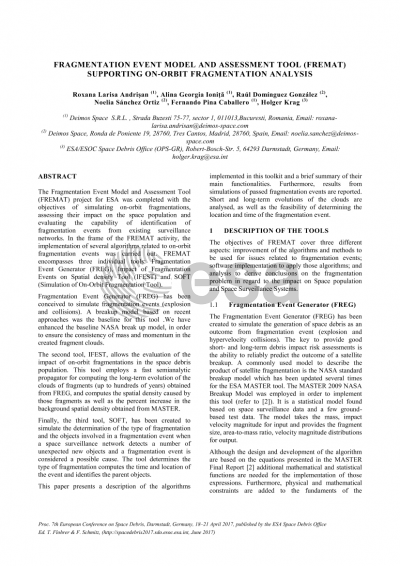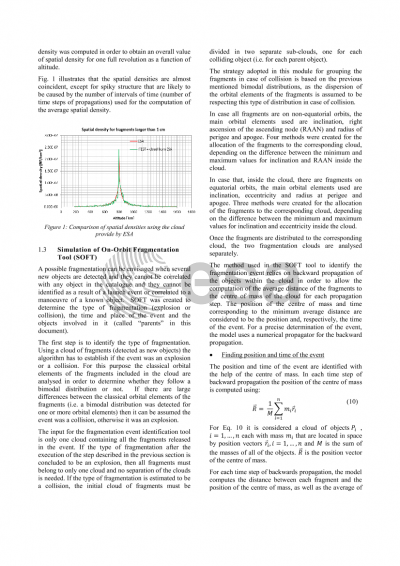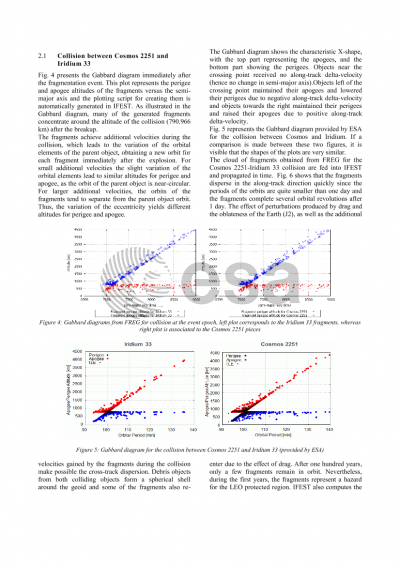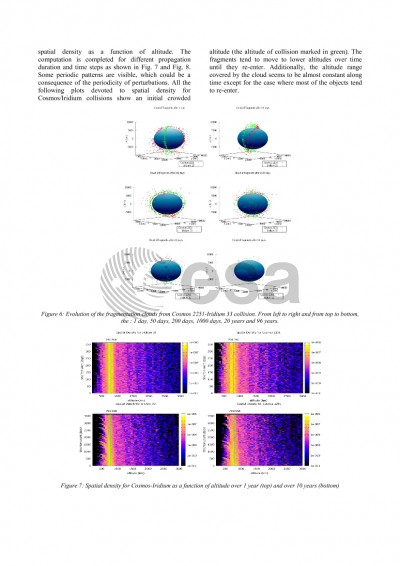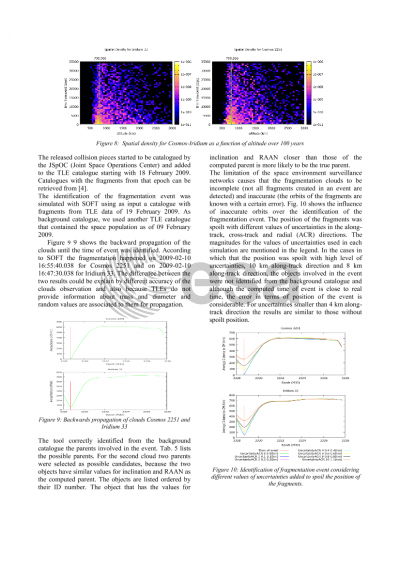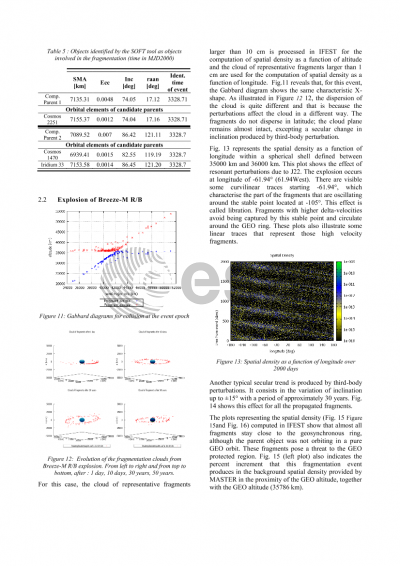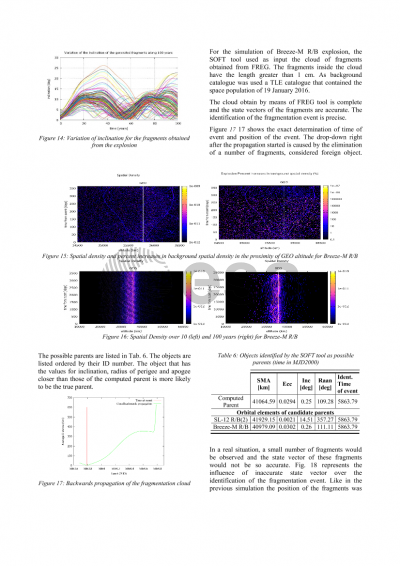Document details

Abstract
The Fragmentation Event Model and Assessment Tool (FREMAT) project for ESA was completed with the objectives of simulating on-orbit fragmentations, assessing their impact on the space population and evaluating the capability of identification of fragmentation events from existing surveillance networks. In the frame of the FREMAT activity, the implementation of several algorithms related to on-orbit fragmentation events was carried out. FREMAT encompasses three individual tools: Fragmentation Event Generator (FREG), Impact of Fragmentation Events on Spatial density Tool (IFEST) and SOFT (Simulation of On-Orbit Fragmentation Tool).
Fragmentation Event Generator (FREG) has been conceived to simulate fragmentation events (explosion and collisions). A breakup model based on recent approaches was the baseline for this tool .We have enhanced the baseline NASA break up model, in order to ensure the consistency of mass and momentum in the created fragment clouds.
The second tool, IFEST, allows the evaluation of the impact of on-orbit fragmentations in the space debris population. This tool employs a fast semianalytic propagator for computing the long-term evolution of the clouds of fragments (up to hundreds of years) obtained from FREG, and computes the spatial density caused by those fragments as well as the percent increase in the background spatial density obtained from MASTER.
Finally, the third tool, SOFT, has been created to simulate the determination of the type of fragmentation and the objects involved in a fragmentation event when a space surveillance network detects a number of unexpected new objects and a fragmentation event is considered a possible cause. The tool determines the type of fragmentation computes the time and location of the event and identifies the parent objects.
This paper presents a description of the algorithms implemented in this toolkit and a brief summary of their main functionalities. Furthermore, results from simulations of passed fragmentation events are reported. Short and long-term evolutions of the clouds are analysed, as well as the feasibility of determining the location and time of the fragmentation event.
Preview
